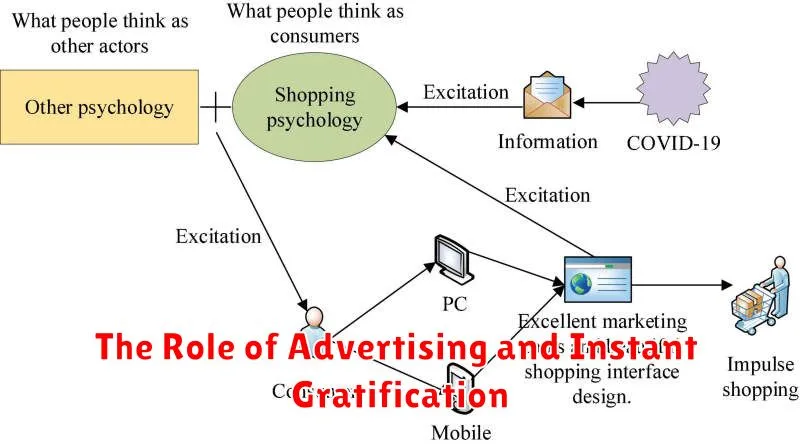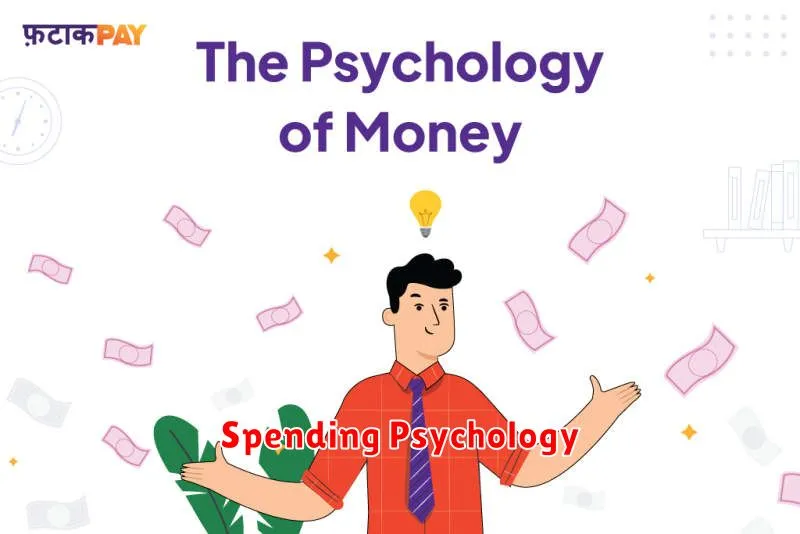In today’s consumer-driven world, understanding the psychology behind spending provides invaluable insights into why individuals often find themselves in financial dilemmas due to overspending. Despite well-intentioned budgeting plans, many grapple with the impulse to purchase beyond their means. This phenomenon isn’t just about financial mismanagement; it’s deeply rooted in psychological factors. By exploring the underlying causes of overspending, such as emotional triggers, societal influences, and cognitive biases, this article aims to unravel why people overspend and how these insights can help develop healthier financial habits. Dive into the intriguing world of consumer psychology and discover the key reasons behind habitual overspending, equipping yourself with knowledge to make more intentional and informed financial decisions.
Understand Emotional Triggers Behind Purchases
At its core, spending money often goes beyond mere necessity. Emotional triggers play a pivotal role in influencing consumer behavior and decision-making. Understanding these triggers is essential in deciphering why individuals may find themselves overspending.
One significant emotional trigger is stress. When faced with stress, some individuals turn to shopping as a form of escapism or to seek comfort. Retail therapy offers temporary relief, often resulting in purchases that were not previously planned.
Another leading cause is the feeling of inadequacy. Marketing and advertising often exploit this by portraying consumer goods as solutions to personal shortcomings. This can lead consumers to purchase items not necessarily out of need, but to potentially enhance their self-esteem or social status.
Additionally, social influences can further drive spending habits. The desire to conform to peer expectations or societal norms often pressures individuals to make purchases that reflect a particular lifestyle, despite personal financial constraints.
Emotional triggers are complex and intertwined with our personal experiences and societal interactions. By recognizing these factors, consumers can make more mindful decisions, potentially curbing the tendency to overspend.
The Role of Advertising and Instant Gratification

In today’s consumer-driven world, advertising plays a significant role in influencing spending behaviors. Marketers craft compelling messages to tap into our desires and highlight benefits, shaping perceptions of necessity and urgency. These advertisements often promise instant gratification, a psychological trigger that encourages immediate purchase decisions.
The power of advertising lies in its ability to create imagined needs and desires. By associating products with positive emotions and aspirational lifestyles, consumers are driven to spend in the quest for immediate satisfaction. This is further amplified by digital platforms, where targeted ads increase the reach and frequency of persuasive messages.
The concept of instant gratification encourages consumers to prioritize immediate rewards over long-term benefits. This psychological tendency can lead to impulsive buying decisions, as individuals seek to quickly fulfill their wants, often at the expense of their financial well-being. The combination of advertising allure and the desire for instant gratification fosters a cycle of consumption that can be challenging to break.
How Social Media Influences Spending Habits
In today’s digital landscape, social media plays a pivotal role in shaping our spending habits. Platforms such as Instagram, Facebook, and TikTok are not merely for social interaction but have evolved into influential marketing channels.
Brands strategically utilize these platforms to connect with consumers, creating a strong sense of consumerism. Through targeted advertisements and influencer partnerships, social media exposes users to a plethora of products they might not have previously considered. This exposure often leads to impulsive purchasing.
The psychological principle known as social proof also significantly impacts spending behaviors. Seeing influencers or peers endorsing products cultivates a perception of popularity and trustworthiness, encouraging others to purchase the same products.
Furthermore, the constant flow of curated content fuels FOMO (Fear of Missing Out), prompting individuals to spend more to keep up with perceived trends and lifestyles portrayed online. This psychological trigger can lead to spending beyond one’s means, ultimately affecting personal financial stability.
Recognize Buyer’s Remorse and Its Impact
Buyer’s remorse is a common emotional reaction after making a purchase, characterized by feelings of regret or doubt. These feelings often arise when individuals realize that their purchase does not meet expectations or when they perceive that they have spent unwisely. Valuable spending is not solely about the product or service purchased but also about aligning with one’s personal values and financial goals.
Recognizing buyer’s remorse is crucial as it can significantly affect subsequent spending behavior. Analyzing the reasons behind this remorse can help individuals make more thoughtful decisions in the future. Often, buyer’s remorse stems from purchasing under pressure, such as during sales or because of external influences, which can lead to a disconnection between the purchase and personal needs.
The impact of buyer’s remorse can extend beyond immediate regret. It may lead to financial anxiety or heightened stress levels, prompting a cycle of compensatory purchasing in an attempt to mitigate negative feelings. Understanding these impacts is essential for developing healthier spending habits and avoiding financial pitfalls.
Develop Mindful Spending Habits
Understanding the psychology behind why we often overspend is crucial in developing mindful spending habits. Overspending can stem from emotional triggers, social pressures, or even the illusion of wealth portrayed by credit cards.
To cultivate these mindful habits, begin by setting clear and achievable financial goals. By prioritizing what truly matters, you create a guiding framework for your spending.
Another key step involves creating a detailed budget that resonates with both your needs and aspirations. Regularly track expenses to identify areas of unnecessary spending and make adjustments as necessary.
Moreover, practice emotional awareness by recognizing feelings or situations that tempt you to make impulsive purchases. This awareness allows you to implement strategies to counteract such tendencies effectively.
Engage in reflective practices like journaling about your purchases. This helps you evaluate past spending which empowers informed decision-making in the future.
Ultimately, by embedding these mindful spending habits into your daily routine, you not only achieve financial stability but also foster a stronger sense of control over your financial life.
Create a Shopping List and Stick to It
One of the most effective strategies in curbing impulsive spending is to create a shopping list prior to making any purchase. This list acts as a concrete plan that aligns with your budgetary goals and helps you resist unscheduled spending.
Preparing a shopping list involves identifying your needs versus your wants. By distinguishing between essential items and those that are merely desirable, you can prioritize your spending and avoid unnecessary expenditures.
Furthermore, adhering strictly to your shopping list requires a disciplined approach. It is crucial to practice self-restraint and remind yourself of the importance of sticking to your planned purchases. Avoiding temptations and steering clear of aisles or sections that may lead to unplanned spending can significantly contribute to staying on track.
Ultimately, having a shopping list and adhering to it helps to maintain financial control and prevents overspending, promoting a healthier relationship with money and fostering sound financial habits.
Practice the 24-Hour Rule for Big Purchases
In the realm of consumer psychology, the impulse to overspend can often override rational decision-making. One effective strategy to combat this tendency is the 24-hour rule, a simple yet powerful method to promote thoughtful spending.
This rule involves delaying any substantial purchase decision by 24 hours. It serves as a pause, giving the consumer the necessary time to reevaluate their need for the item without the influence of immediate emotions. During this period, individuals are encouraged to consider whether the purchase aligns with their long-term financial goals or if it merely satisfies an impromptu desire.
Implementing the 24-hour rule can significantly reduce buyer’s remorse and enhance self-awareness in spending habits. It shifts the focus from instant gratification to a more deliberate assessment of value and necessity, thereby fostering a healthier financial mindset.
Incorporating this strategy requires discipline but can ultimately lead to more mindful spending and improved financial well-being. By understanding and practicing the 24-hour rule, individuals can better resist overspending and make more informed purchasing decisions.
Replace Shopping with Healthier Coping Mechanisms
Many individuals turn to shopping as a way to deal with stress, anxiety, or emotional distress. While shopping can provide a temporary relief, it often leads to overspending and financial trouble. Instead of resorting to retail therapy, it’s crucial to explore healthier coping mechanisms that can provide long-term benefits.
One effective method is to engage in physical activities. Exercise has been proven to boost mood and reduce stress by releasing endorphins, known as the body’s natural mood lifters. Whether it’s a simple walk, a session at the gym, or a yoga class, physical activity can be a productive way to manage emotions.
Another approach is to engage in mindfulness practices such as meditation or deep breathing exercises. These practices can help in calming the mind, reducing stress, and enhancing one’s overall well-being. By practicing mindfulness, individuals can become more aware of their spending habits and make more intentional decisions.
Building strong social connections can also serve as a powerful alternative to shopping. Spending quality time with friends or family, joining community groups, or participating in social activities can provide emotional support and reduce the feelings of loneliness or emptiness that often lead to unnecessary spending.
Finally, it’s beneficial to explore creative outlets like art, music, or writing. These activities offer a constructive channel for expressing emotions and can be extremely fulfilling. By finding joy and satisfaction in creative pursuits, the need for compulsive shopping as an emotional escape diminishes.

